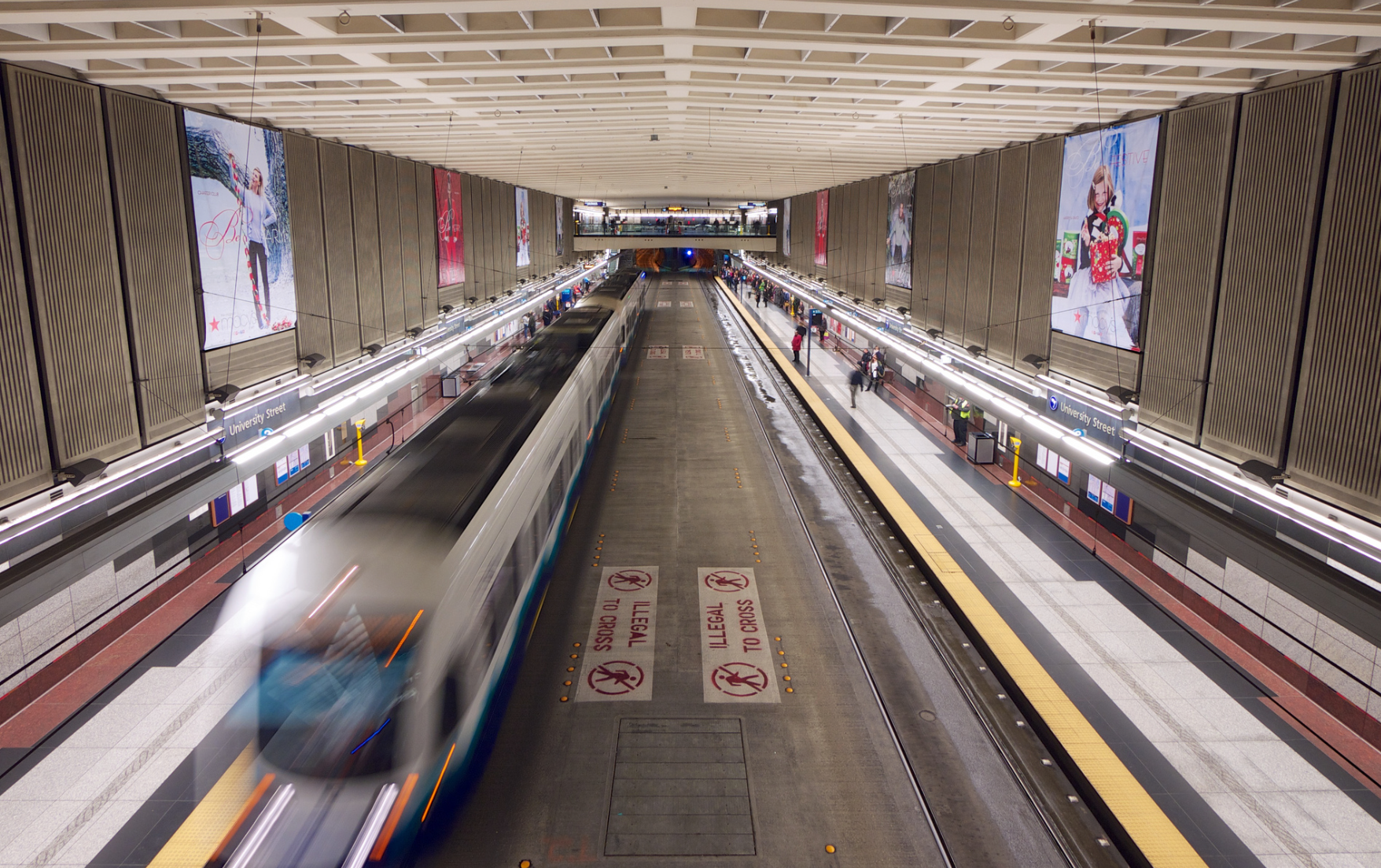Black unemployment is about twice that of white unemployment, a statement that held true 50 years ago. Indeed, unemployment was one of several key areas in which there'd been little change for black people since 1968, according to the Economic Policy Institute's recent reflection on the 1968 Kerner Commission. Although unemployment reflects a range of inputs, one new study suggests that a spatial mismatch between jobs and people, as well as their access to different transportation modes, may be part of the problem. The new study, published in City & Community, argues that access to transit in particular is critical for closing racial unemployment gaps.
A history of segregation, spatial inequality and the relocation of manufacturing work has created a contemporary spatial mismatch between jobs and people with a racialized spatial logic, writes the study's author, Kenya Covington of the University of California, Los Angeles. Documenting the racial gaps in both transit use and automobile access, the study sought to untangle how reliance on different transit modes interacts with unemployment. Across the 100 largest metropolitan areas, black commuters relied on transit the most, at 11.5 percent, more than three times higher than that of white workers, according to the study. And even though spatial mismatch decreased by an average of five percentage points between 1990 and 2000, according to the report, "it continues to present a significant employment disadvantage to non-White males."
The study looked specifically at the black-white male unemployment gaps in the 100 largest metropolitan areas.
For those large urban areas, the study found that automobile access and public transit use were "negatively associated with unemployment rates" for both black and white men employed in the 100 largest metropolitan areas. Spatial mismatch disparities also seemed to translate to increased employment gaps such that as the differences in the spatial mismatch confronted by black and white male workers increased so too did the gap between black and white unemployment.
How did differences in car access or public transit use impact unemployment gaps?
"Metropolitan areas where large racial gaps in car access exist tend to have larger racial differences in unemployment with black males experiencing lower car access and higher unemployment on average," explained Covington in an email. But that wasn't the whole story. Covington continued, "in metropolitan areas with greater racial gaps in public transit, there tends to be a narrowing of the racial gap in unemployment."
In other words, "when car access is limited or problematic" for black people, Covington added, "overcoming spatial inequality requires access to another mode of transportation," like public transit, "for their commute to work."
So while some spatial mismatch research has pointed to a need for increased automobile access, Covington writes, "as a policy response to the persistent spatial mismatch problem that millions of minority and low-income workers face in large metropolitan areas, public car puchasing efforts are expensive to expand and likely shortsighted and difficult to sustain." Though the automobile effect is "powerful," according to the author, "this study showed that public transit remains a necessary transportation option."
Indeed, another recent study of 148 midsize cities across the country found that increasing a city's multimodality was connected to decreases in income inequality.
Of course, quality of transit options matters too. Referencing a composite ranking created by the Brookings Institution that looked at coverage, frequency and job access in the 100 largest metropolitan areas, the researcher found a negative relationship between quality transit and black male unemployment. In that 2011 ranking, the Houston area was among the top 30 metropolitan areas when it came to frequency but bottom 30 when it came to coverage.
Since the bus rerouting, some of that may have changed. But there are still gaps in access. So while 39.3 percent of white residents in the Houston area have access to high-frequency transit around the clock, according to the Center for Neighborhood Technologies' AllTransit mapping tool, only 16.3 percent of black residents do.
In the journal article, Covington offered a couple explanations for why large disparities in transit use might correlate with reduced unemployment gaps between black and white male workers. "Public transit could be viewed as an equalizer in mobility," she suggested. Or perhaps transit is just the better option for those black male workers, particularly as car commutes "become more onerous." Regardless, she concluded, the study's findings seemed to suggest "that public transit represents a powerful substitute to automobile access" and that "expanding public transit infrastructure is important to addressing spatial inequalities at the metropolitan level."

